Reinassance of Cosmetic Dermatology for a Greener Society: The Nanochitin- Nanolignin Approach
Pierfrancesco Morganti1*, Gianluca Morganti2, Alessandro Gagliardini3 and Maria Beatrice Coltelli4
1P..M. R&D Center, Nanotechnology Unit, Academy of History of Healthcare Art , Rome, Italy
2ISCD Nanoscience Center, Rome, Italy
3R&D Unit, Texol Srl, Scanno (PE), Italy
4Department of Civil and Industrial Engineering and National Interuniversity Consortium of Material Science and Technology, University of Pisa, Italy
Submission:March 02 2023; Published: April 03, 2023
*Corresponding author:Pierfrancesco Morganti, Academy of History of Healthcare Art, Italy
How to cite this article: Pierfrancesco M, Gianluca M, Alessandro G, Maria Beatrice C. Reinassance of Cosmetic Dermatology for a Greener Society: The Nanochitin-Nanolignin Approach. Palliat Med Care Int J. 2023; 4(3): 555638. DOI: 10.19080/PMCIJ.2023.04.555638
Abstract
COVID-19 pandemic, impacting both health and wealth, has changed the people’s way of living. Therefore, consumers are looking for holistic and resilient solutions based on more thoughtful production, consumption, and convenience, free of waste. It has been estimated, in fact that the majority of non biodegradable waste is due to plastic packaging’s used for many kinds of products, the production and consumption of garments and apparel and consumer products, including cosmetics and household goods. It is to remember that a great part of the plastic waste has been recovered into oceans, transformed in microplastics. However, plastic particle pollution doesn’t degrade and are ubiquitous in air, water, food, and personal care products, including toolpath, lip gloss and tattoo ink residues. thus, consumers are more oriented to buy biodegradable products nature derived, price-sensitive and made by ingredients skin- and environmentally friendly, degraded to molecules used from humans and plants as cell food and/or energy. Therefore these ingredients are considered “green” for their ability to reduce the environmental risks and ecological scarcities increasing a sustainable development .This new approach, in fact, is due to the great waste and pollution invading the planet, causing yearly many human diseases and environmental disasters. Thus the need to recover pure and natural active ingredients and innovative, biodegradable delivery systems which are respective of the nature and able to ameliorate the efficacy of drug, cosmetics, diet supplements and all the goods, transforming the linear Economy in Circular Economy.
Linear Economy in fact, is based on the taking, making, and producing waste, while Circular Economy is based on re-designing, reducing, reusing and recycling the products. Consequently, scientists and Industries have to develop a new way for making the products, realizing new carriers and techniques able to delivery active compounds through the skin layers and mucous membranes, in a non-invasive way and at sufficient concentration. At this purpose it has born a renewed interest for natural biopolymers, including Chitin and Lignin, obtainable at low cost from food forestry waste. Humans and the environmental enzymes, in fact, biodegrade easily these polymers to human and plant cell-friendly molecules. For all these reasons, our group are proposing the use of these two natural polymers at their micro-nanosize to make innovative and smart tissues. Thus chitin nanofibrils and nanolignin, complexed each to other for simply contact in water solution and transformed in block polymeric micronano particles (PLs), have been used to make innovative delivery systems. They, in fact, being characterized by electropositive and electronegative electrical charged respectively, may be easily combined together by the gelation method, having also the ability to encapsulate different kind of active ingredients. The obtained PLs, characterized by the selected ingredients, may be embedded into emulsions and/or bound to the tissue ‘fibers made by natural polymers. It is interesting to underline the possibility to use the same PLs for producing not only smart cosmeceuticals and nutraceuticals but also biodegradable packagings. Therefore by these innovative micro/nanoparticles and smart cosmeceutical-tissues it seems possible to develop new delivery systems and packagings for making new drugs, diet supplents and cosmetics for the Reinassance of an innovative Cosmetic Dermatology.
Keywords: Waste; Pollution; Microplastics; Cosmetics; Cosmeceuticals; Nutraceuticals; Biopolymers; Chitin nanofibrils; Nanolignin; Phygital
Keywords: Ag/AG: Silver; CN: Chitin Nanofibrils; DES: Deep Eutectic Solvents; GA: Glycirr Hetinic Acid; LU: Lutein; NADES: Natural Deep Eutectic Solvents; NL: Nano Lignin; NMR spectroscopy: Nuclear Magnetic Resonance Spectroscopy; NI: Nicotinamide; PHA: Polyhy Droxy Alkanoate; PLA: Polylactic Acid; NPs: Micro-Nano Particles; R&D: Research and Development; SEM: Scannig Electron Microscopy; USD: United States Dollars; UVB: Ultraviolet B Rays; VE: Vitamin E; VC: Vitamin
Introduction
The ongoing COVID-19 crisis has accelerated the sustainability and skin health trends, fueling the growth of the global Cosmetic market [1]. Consequently, consumers “looking for more from life in the post pandemic” are demanding products made by natural, skin- and environmentally friendly ingredients which, free of waste and chemicals. have to show Clinical Efficacy, being packed by plastic-free containers also [2,3]. Thus the Cosmetic market should reach USD 463,5 billion by 2027 from the USD 380,2 billion generated in 2019 [4], while the global market value for natural Cosmetics and Personal care is expected to increase from almost USD 30 billion in 2021 to roughly USD 50.5 billion by 2027 [5,6]. However, the Cosmetic and Personal care Industry continues to be a science-driven and highly innovative sector for the consumer’ requests, being also characterized by large investments in R&D ,still in absence of regulations that establish the meaning of “natural cosmetics” [7]. On the other hand, the daily use of a wide range of cosmetic products made by different kind of chemicals, are considered to be cause of allergy and sensitization problems as well as of the so called cocktail effect due to the synergistic interaction of different substances [8,9].The beauty Industry, in fact, uses globally thousands of man-made and natural ingredients to make many cosmetic products packaged by more than 120 billion plastic units per year. Unfortunately 95%of these units is thrown out after just one use and 14% is recycled [10], so that part of the cosmetic and other consumer products’ waste end up each year in the oceans together with their containers, contributing to increase the global pollution [10].These 10-20 million tons of plastics, transformed in microplastics by sun and microbial enzymes, give rice to toxic compounds for both environment and the human health [11].It has been shown, in fact that microplastics, entering from marine to food system(Figure 1), represent a problem for humans, enhancing, for example, the antibiotic resistance and the inflammatory Bowel disease [12-15]. They in fact have been recovered in tea bags (Figure 2), and in human placenta and blood [16-18]. However, in the U.S. alone, health and beauty sales rose USD 3.74 billion and since 2018,”beauty and cosmetics has proven to be the fastest-growing interest among male consumers” also. Both young and elderly men, in fact, looking to climate changing and sustainability, are shopping in response to health and safety (Figure 3) [19]. Moreover, all consumers have made changes to their beauty/skincare preferences and, simplifying their way of living, are selecting and buying only the products considered to maintain a natural beauty. Therefore they are looking more to a real appearance, as opposed to enhancing it (Figure 4) [20],planning to buy more products and services able to improve their health and wellness. Consequently, consumers are spending about USD 1.5 trillion a year, likely to choose natural products over effective ones [7,21]. However, the worldwide consumers especially in China, are looking and purchasing for personalized and natural - oriented cosmeceuticals, nutraceuticals and beauty treatments, thinking they are tailoring and working for themselves [22].This the reason why the global demand for natural and clean skin care cosmetics [7] is steadily growing and people seems to be more oriented to know where the formulation’ ingredients come from, being increasingly looking for wellness-related products and services, including digital and social channels [23].
Moreover, there is a rediscovered interest to go versus the circular economy, based on redesigning, reducing, reusing and recycling the products in substitution of the linear Economy based on the concept of taking making and producing waste [24] To “reuse and better design, Infact, can significantly reduce the material billion and the expense of disposal”[24]. Consumers, in fact, have to better understand the necessity to don’t produce waste and to know the potential and utility of recycling food and agro-forestry by-products for making new safe and effective goods for different fields, including Pharmaceuticals, Nutraceuticals and Cosmeceuticals [25]. They have to know that Circular Economy represents an Industrial system and a new way of consuming for stopping or modifying the climate changing, the production of waste and pollution, fundamental to safeguard the natural raw materials and the Planet Biodiversity for the future generations [24,25]. Therefore, the today’s goods should be the tomorrow resources, rethinking and redesigning the society’ future [24]. At this purpose, a new wave of innovation is emerging in biological science by an accelerated confluence in computer automation, data analytics, machine learning artificial intelligence, and biological engineering [26,27]. This so called bio revolution as integrated part of Circular Economy “could have significant impact on economies and our lives, from health and agriculture, to consumer goods and energy materials”[26,27]. As a consequence, products made by these innovative biological engineering approaches will result more sustainable helping to better manage the Earth’s natural resources. The bio revolution, in fact, is based on the use of more precise and innovative R&D technologies able to connect humans to computers [26]. Thus the so called phygital reality(physical plus digital)is emerging, where consumers can seamless live, work, shop and play both in person and online by their smartphone, thus involving the 3i network: immersion, immediacy and interaction (Figure 5) [28,29]. In conclusion, the bio revolution and the phygital reality represent the last target of our society. but what we may do to handle and increase these new technologies? It is necessary to change our way of thinking, Producing, consuming and transforming the linear economy in the circular green economy [24-30]. It has been estimated, in fact, that each year by 2030 more goods will be produced together with billon tons of waste,74 million tons of which will be represented by e-waste due to the increased consumption of computers, tablets and iPhones used for the reported phygital reality [28,29]. This will cause further problem of sustainability [24,30,31]. However as previously suggested, consumers are keen to recycle and willing to pay more for eco-friendly products. Unfortunately, in various key markets, “more than 8 in 10 consumers have heard the term e-waste”, a third don’t know its meaning while 18% aren’t aware of the term”, particularly people aged 45 and up [29-31].
However, It is interesting to underline that worldwide consumers think and agree that civic authorities should help people to recycle, providing more information and making it more convenient [30]. Thus, the need to search and use natural raw materials to make biodegradable bio-composites obtainable from agro-forestry and food-industry. These innovative materials might be useful to realize new smart products, more humans- and ecofriendly [31-34]. Among the biopolymers, Chitin, and Lignin at their nanosize dimension, have shown to be particularly useful for making innovative carriers and active ingredients for Medical and Cosmetic use [31-36].
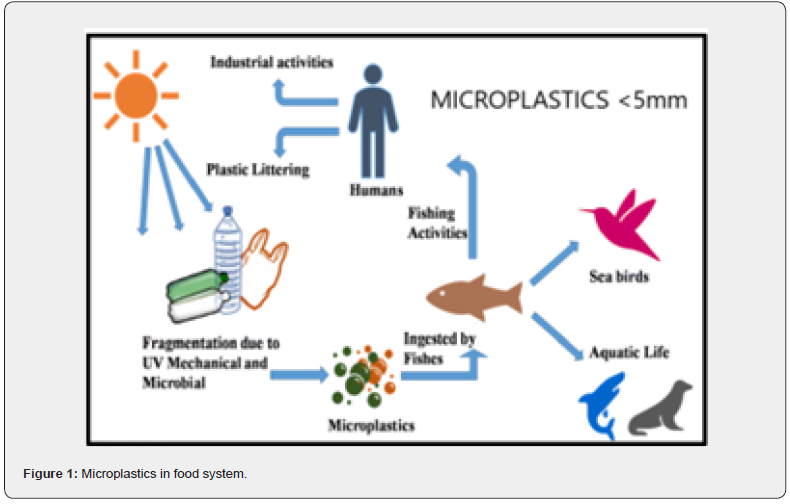
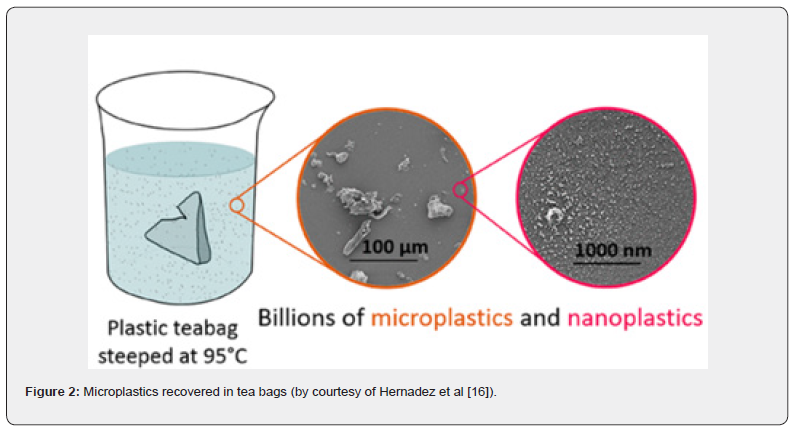
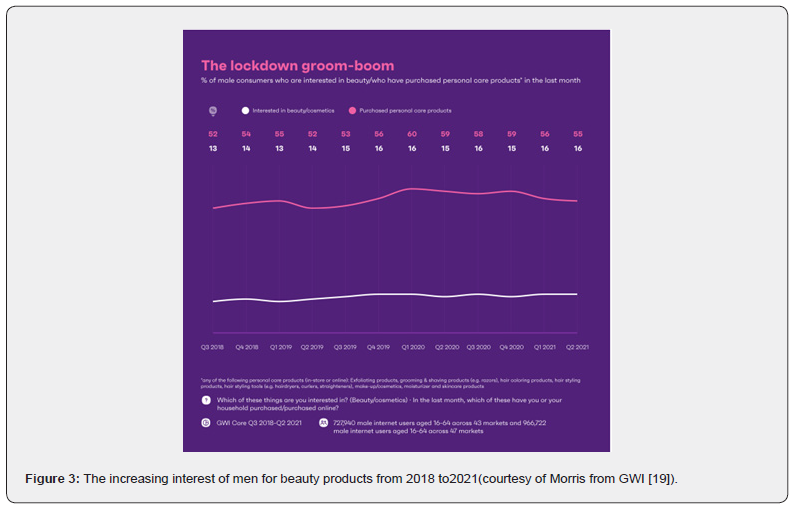
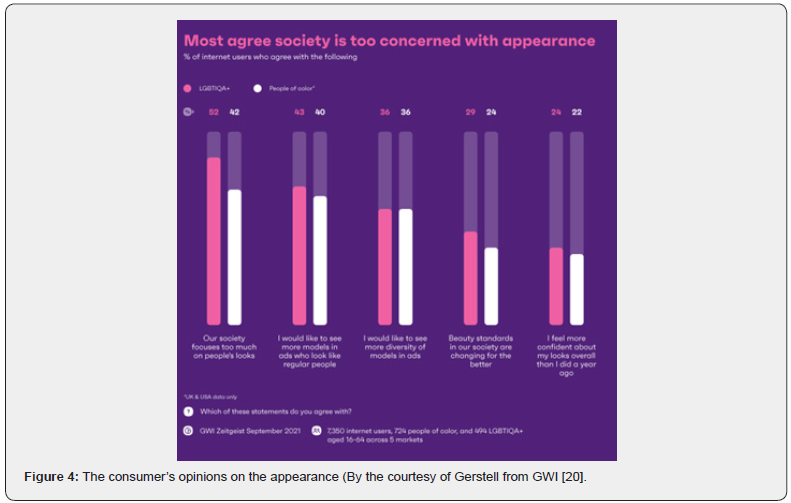
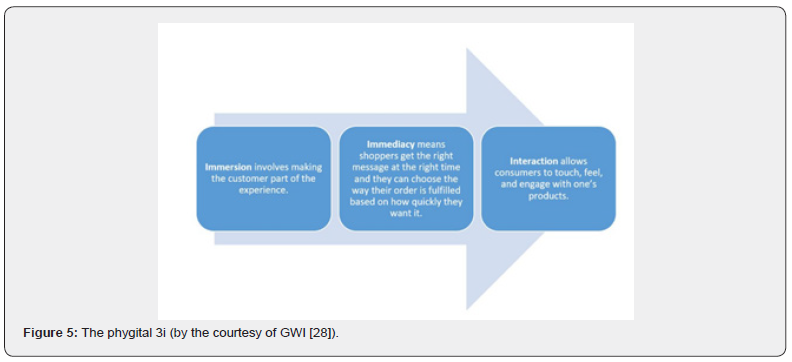
Biopolymers and Bio-Based Polymers: The Cosmetic Dermatology Approach
As previously discussed, the beauty consumers are not only searching for more natural cosmetics and natural skin care but are also focusing their interest to know where the ingredients come from, during all the production chain [22,35]. Moreover, because of the COVID-19 pandemic they are looking for more hygiene considering body and mind health as fundamental indicators for a healthy state, connected to a green environment [36-38]. Consequently consumers, craving for a major sense of control over their live, are giving much attention to the use of innovative natural ingredients and technologies that have to be sustainable and respectful of human health and the environment [38-40].
Particular attention has reserved, therefore, to control safeness and effectiveness of the cosmetic purchased. People, in fact, desire to know in advance source and origin of the ingredients used for the product’ formulation, as well as for the materials utilized for making its packaging [39,40]. Thus, the worldwide increased production and use of biopolymers and bio-based polymers [41,42] But which the difference from biopolymers and bio-based ones? Both contain monomeric units that are covalently bonded to form larger structures. On the one side biopolymers are polymeric natural macromolecules normally present in natural organisms made by repetitive monomers produced from living organisms and, therefore, generically extracted from waste organic materials [41,42]. On other side the bio-based polymers don’t exist in nature and are man-made and therefore synthesized starting from natural monomers or building blocks obtained from biological raw materials [41,42]. However, both the polymers may be used to produce goods as well as skin- and eco-friendly tissues/films useful as carriers for making medical, specialized food and cosmetic products [43-49]. In any way, all the living materials made by housing biological cells within nonliving matrix (i.e., Tissue/film) have been recognized from scientists as useful material mimicking nature.
Collagen, hyaluronic acid, chitin and lignin are the more used biopolymers while, among the bio-based ones, polylactic acid (PLA) and polyhydroxyalcanoates (PHA) are the more known biobased ones. all these polymers are normally used in the field of cosmetic dermatology and medicine, being characterized by their skin- and environmental-friendly effectiveness and safeness [43-50].But what does Cosmetic Dermatology mean ?The term, suggested in Monterey (CA,USA) in 1983 during a meeting of American Clinical Dermatology, became a reality in 1985 with the foundation in Rome (Italy) of the International Society of Cosmetic Dermatology and the foundation of its official organ :Journal of Applied Cosmetology that until now are publishing scientific papers on this field [51]. Cosmetic Dermatology may be considered a new branch of science that unify the skin’ knowledge of dermatologists with the chemical experience of cosmetologists on Cosmetic ingredients and skin care formulations, as reported from many books edited by eminent dermatologists and Cosmetic chemists, since 1998 [52]. At this purpose many new cosmetics and advanced medications are using biopolymer and bio nanocomposites in their formulations [52-54]. However, due to the experience of our research group in the field of both cosmetic dermatology and polymers, it has been shown that chitin and lignin at their nano dimension possess interesting Medical and Cosmetic effectiveness when used to produce co-polymeric block micro/nanoparticles [43-49]. Being chitin an electropositive polymer and lignin an electronegative one, when in contact in a water solution by a slow stirring they form a block polymeric complex by the ionotropic gelation method (Figure 6) [55-57]. Before going on, it seems useful to report some news about the source and physicochemical characteristics of these two natural biopolymers.

Chitin
Chitin is a Biocompatible and biodegradable polysaccharide estimated to be synthesized in the biosphere in a quantity over 100 gigatons yearly. It is a polymer that, highly organized in hierarchical crystalline structures, is composed of nano-scaled building blocks, showing interesting mechanical and optical properties. The particular properties shown from this polymer seem due fundamentally to its degree of acetylation and the hydrogen bonding formed between the acetyl amine group and the hydroxyl group of chitin chains (Figure 7) [58-60]. Moreover, chitin is an amphiphilic polymer showing super hydrophobic properties based on the micro patterning and surface engineering at the nanoscale [61]. However, as linear polymer it is composed of N-acetyl-2-amino-2-deoxy-D-glucose units jointed together by beta-glucosidic bonds. As raw material it represents also the principal source of carbon and nitrogen for marine chitinolytic organisms, including crustaceans and krills, as well as mollusks, insects, soil fungi and bacteria [61]. Hard crustacean shells contain 15-20% chitin and around 75% calcium carbonate with protein, while softer ones contain 15-30% chitin and 13- 40% calcium carbonate plus protein. Protein, minerals, and carbonates are totally eliminated from the adopted procedure to make chitin nanofibrils [59-62]. Chitosan is the chitin derived compound having a degree of deacetylation from 50% to 90%, depending to the adopted production method. However, both the polymers have a high economical value. thus, chitin and chitosan find extensive applications in various sectors, including the biomedical , food and cosmetic ones [53,54,63-65]. However, the different applications of these polymers are due to their particular biological activities connected with their structural and morphological characteristics placed between cellulose and collagen [64-67]. Chitin, recovered in nature in the different alpha, beta and gamma forms, is mostly found in crustacean shells waste, such as prawns, crabs and lobsters , in its most stable alpha crystalline form with the polymer’ chains arranged and packed in antiparallel and hexagonal fashion; the beta-crystal form presents a parallel arrangement of chains [59-61]. On the other hand, chitin nanofibrils (CN) obtained industrially by our patented technology [57], have a needle-like form at the mean dimension of 7x5x300 nanometers, being chemically analogous to cellulose with acetamide groups located at the C-2 positions (Figure 8) [59- 61]. It is interesting to underline how the activity of CN seems due fundamentally to their micro-nano dimension. In fact, while the small chitin (<40 Millimicrons) has shown an anti-inflammatory effectiveness, the intermediate chitin [40-70 millimicrons] resulted to increase the inflammation process activated by macrophages, while the large ones had no activity [64]. These first data were successively confirmed by other authors by in vitro and in vivo studies [66-71]. However, it is interesting to underline the possibility this electropositive polymer has to produce micro-nano particles (NPs) when in contact, for example, with the electronegative nano-lignin (NL) useful to realize innovative multifunctional materials [72-74]. Before starting to describe the activity of these NPs, it seems necessary to report some news on the source and activity of lignin.
Lignin
Lignin, the most abundant phenolic amphoteric biopolymer in Earth characterized by the presence of both hydrophilic and hydrophobic components, is made by a chiral structure that varies depending on plant species and extraction processes [75,76]. In fact each year, over 100 million tons of this polymer are produced from waste, 98% to 99% of which is incinerated to produce energy [75]. However, lignin is an organic material that, found in wood and lignified elements of plants, is built from the polymerization of three phenyl propanoid monomeric units interconnected by C-O or C-C bonds: p-coumaryl alcohol( H-Lignin),coniferyl alcohol (G-Lignin)and Sinapyl (S-Lignin) (Figure 9) [74,75]. The units’ ratio of these monomers depends from plant species and the habitat, so that Lignin in hardwood contains a higher quantity of S-Lignin units, while soft and grass Lignin, that contain more G-lignin units, are considered most promising for their structure [76]. This kind of lignin, in fact, is more rich of reactive sites at the benzene ring and, therefore, more useful for chemical treatments [77]. However, it is interesting to underline the improved UV-A and UV-B absorbing and antioxidant properties shown from this important polymer when in its nano size dimension [78,79]. Particularly, the antimicrobial activity of lignin seems due to the C=C double bond and the gamma-methyl groups present in its side chains [79-81]. Consequently, the nano-dimension of the polymer, facilitating its penetration through the bacterial cell, increases its activity [79-81]. Industrially speaking, lignin is commercially available primarily as a byproduct of pulping and to a less extend of bio-refinery [82]. During both the processes the polymer’ structure may be degraded, forming smaller molecules with new functional group of active chromophores [83]. Thus, the emerging biofuel/bioenergy’ technologies are going on to develop new value-added products made by more cost effective processes, also if the actual lignin used at this purpose represents today only 2% of the entire lignin production [75,83].Therefore as discussed previously, lignin might be also used to realize the proposed innovative biodegradable micro nanoparticles and tissues for making “active” carriers for medical and cosmetic products [32,35,36].
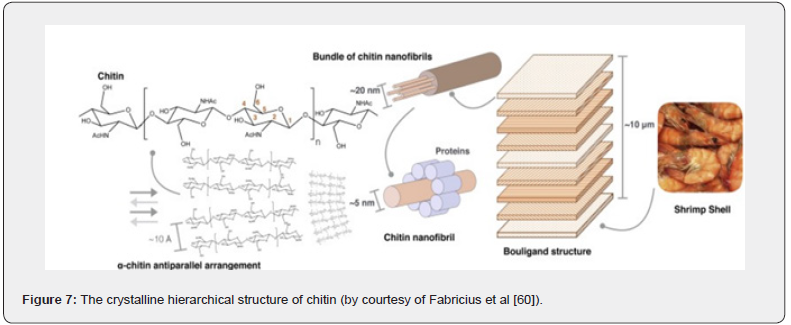
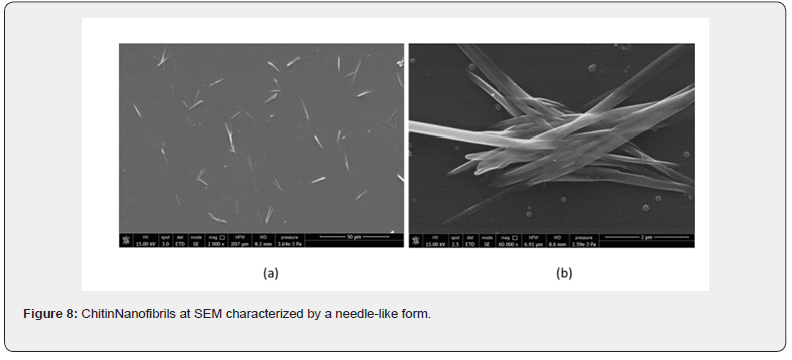
Chitin-lignin Block Micro/Nanoparticles
As previously indicated, our research group obtained blockpolymeric micro nano particles, mixing together in water solution the crystallin chitin nanofibrils with the purest nano-lignin extracted from grass material [43-45]. During this process it was possible to encapsulate (Figure 10) different kind of active ingredients, such as vitamins A, E And C to be used as antioxidant compounds, as well as glycyrrhetinic acid (GA), nicotinamide (NI) and Ag+ ions as anti-inflammatory and antibacterial agents respectively, embedded into the reported tissues/films [44- 49],[84-92] (Figure 11). Naturally, both thermal stability and skin compatibility of all the obtained NPs were controlled (Figure 12), before producing the tissues by the electrospinning technology [71,86]. However, it is interesting to underline how the various NPs embedded into the fibers of tissues, have been able to characterize the different effectiveness and safeness of the obtained final products [35,43-49,86-88]. Thus, the tissues embedded by antibacterial micro/nano particles were used to make biomedical dressings to repair burned or wounded skin [89,90], while those embedded by anti-inflammatory and antioxidant micro/ nanoparticles were used to repair the prematurely aged skin (Figure 13) [57,71,72,86-89,91].
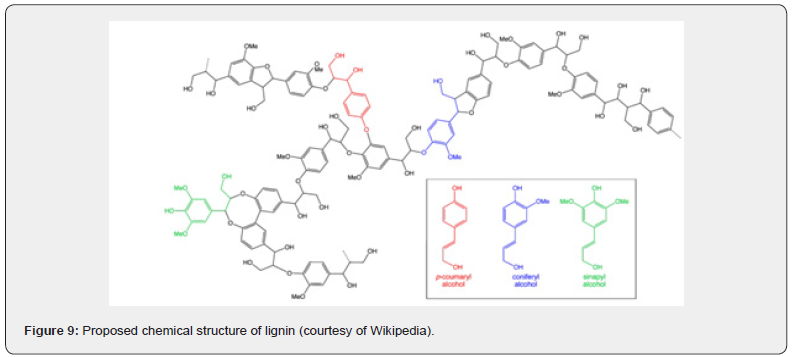
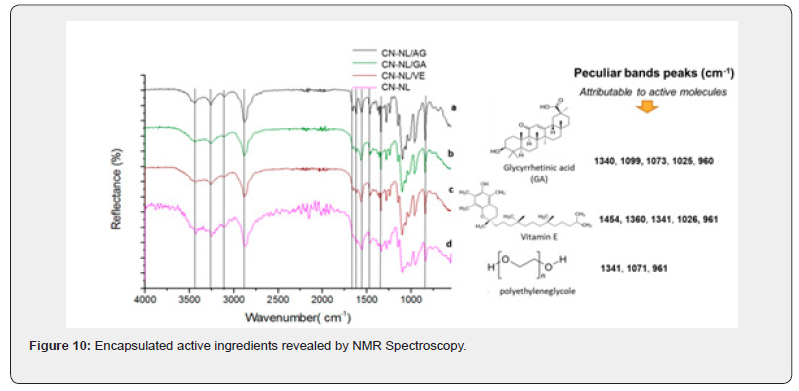
However the combined activities of the two polymers (i.e. nano chitin and nano lignin) resulted of fundamental importance for obtaining the self-assembly effectiveness and safeness of the realized micro-nano particles, as well as the selected parameters such as source of lignin and chitin, pH of the solution, temperature and naturally the nature of the solvent used(i.e. Water) In any way, these tissues/films have to be considered innovative carriers for advanced medications and beauty products because, being skinand environmentally-friendly, are made by natural biopolymers, easily biode gradated and purchased at low cost [43-48,91]. Moreover, they may be realized by the use of active ingredients and polymers obtained from food-forestry waste, thus safeguarding natural raw materials and the earth’s biodiversity for the future generations [92].
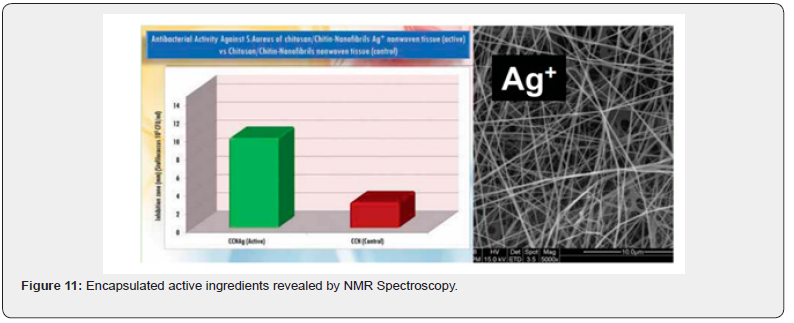
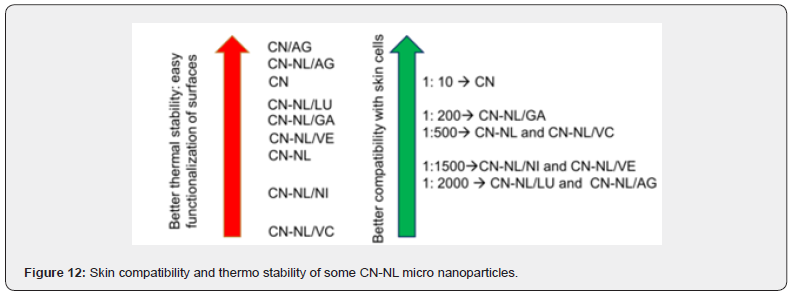

Conclusion and Future Perspectives
By the actual linear economy, the demand for materials and products are increasing day by day with a consequential production of waste and pollution. Thus, the necessary to modify the way of producing and consuming adopting the circular economy’ system, connected also to a better understanding of the recycling modality [24,30,31,93]. The product recycling, in fact, represents a key challenge for policy-makes, research and consumers. Another important problem to solve is to obtain and adopt the best delivery systems capable to ameliorate and possibly increase the efficacy of drugs, cosmetics and specialized food [94]. The challenge, in fact, is to find the best way for bettering the active ingredients and the products’ effectiveness using innovative nanotechnological systems, capable to increase their penetration and interaction with the skin’ lipid lamellae and/or the mucous membrane’ peptides [94-100]. Thus the need to recover natural ingredients and develop biodegradable new carriers and techniques, for easily delivering the designed active ingredients through these natural barriers [88,91,94-99]. Simultaneously as previously discussed, it became a further necessity to organize a correct waste recycling, transforming the line are economy in circular economy [24,30]. However, the active ingredients have to be delivered at the designed site , in a non - invasive way and at sufficient concentration.
Therefore, the proposed use of the biopolymeric-tissues embedded by the chitin nanofibrils and nano chitin’ micronanoparticles seems to go in the right direction [99-101]. As previously reported in fact, the natural complex CN-NL is able to form polymeric NPs which, encapsulating different active ingredients, may be embedded into the biodegradable tissuecarriers, characterizing their effectiveness and safeness also. Thus, the possibility to realize new and smart topical products which, produced at a low consume of energy and water, are free of unnecessary ingredients or chemicals. Therefore, by this new proposed technology it seems possible to realize innovative skin-penetrating and biocompatible matrices capable of loading selective active ingredients, releasing them at the designed skin and mucous membranes’ layers. Therefore, the future trends of cosmeceuticals, nutraceuticals and topical medications might be based on the use of the reported tissues which, manufacturing in a dry state and limiting their dependence on water, seem able to control the consumer’ requests for a natural and safe beauty..
These tissues in fact, resulting biodegradable and healthy for humans and the environment for their packaging materials also, may be obtained at low cost from food-forestry waste [57,92]. In conclusion, by a more consumption of environmentally friendly innovative cosmeceuticals, nutraceutical and advanced topical medications, packed by biodegradable containers and made by recycled and reused materials, it seems possible to obtain a positive contribution for the community’ activities, transforming unwanted resources into skin-friendly products, beneficial for the environment also. Finally, this way of operating is correlated with the consumers’ requests of natural-derived and/or the so called “hybrid beauty and cosmetics”, chemicals-free, considered not only to save health, time and money but also to be indispensable to preserve water and the environmental raw materials, necessary to obtain life’ satisfaction and happiness [102-105]. Thus, according to the last trends of the beauty industry, the terms “biohacking” and “beauty verse” have been coined .The first, coming from union between biology and hacking, should indicate the set of actions that an individual could carry out for a better understanding about how the body work and how we age [106,107]. Therefore, it might be possible to optimize the body, mind and life activity through the use of different medical, nutritional, cosmetic, biological and electronic techniques and tools [102,105] on the other hand, beauty verse, the union of metaverse with beauty, intends converge virtual and physical worlds with the aesthetic appearance [102,107]. The development of virtual communities and mixed reality, in fact, has been particularly accelerated from the worldwide diffusion of COVID-19 pandemic [107]. However, to make innovative skin-friendly products it is necessary the recovery of new technologies capable of extracting pure, natural active ingredients and control their specific activities. Among the more recent techniques, it is to remember the use of ultrasounds by which some extraction process for obtaining active ingredients from herbs and plants have been modified, determining, and predicting their physicochemical properties also [108].
Other innovative extraction methods of growing interest are based on the use of green, environmentally friendly solvents, including the deep eutectic solvents (DES) and the natural deep eutectic solvents (NADES) [109]. However, for obtaining the best extractive results it results important not only the method used, but also the standardization of laboratory equipment’s, combined with physicochemical predictive process and innovative, modular and flexible manufacturing technologies fully automated by advanced control methods [110]. In conclusion as previously focused, these smart tissues may be used as biodegradable and innovative carriers for active ingredients effective to rejuvenate [71,86,87,91,111,112] the skin as well as to repair a wounded or burned skin [36,68,89,113] or to rejuvenate a prematurely aged skin [36,71],[86-91],[111-113].Therefore, a more frequent use of these specialized cosmeceutical-tissues might represent the renaissance of the future cosmetic dermatology, respective of both human and the environment health.
Author Contributions
Idea of manuscript PM; Writing-original draft preparation PM, GM; writing review and editing PM, AG, MBC; Supervision PM, GM, MBC, AG. All the authors have read and agreed to the Publishing version of manuscript.
References
- (2021) Gilsenan K Consumer insights.
- (2020) Mintel. Trends 2025: Beauty & Personal Care.
- Trifonova V (2022) The pursuit of purpose: how we'll live our lives in 2022.
- (2020) Global Cosmetic Market to reach 463, 5 billion by 2027. Allied Market Research Report.
- CE Cosmetic and Personal care Industry (2020) Cosmetic Europe Report.
- Statista (2022) Global market value for natural and organic Cosmetics and personal care from 2021 to 2027. Statista Report.
- Barros C Barros (2020) RBG Natural and organic Cosmetics: definition and concepts. J Cosmetol & Technol 6(2).
- Sarantis H, Naidenko OV, Gray S, Houlihan J, Malkan S, et al. Not so Sexy: The Health risks of Secret chemicals in fragrance.
- Panico A, Serio F, Bagordo GT, Idolo A, De Giorgi M, et al. (2019) Skin safety and Health prevention: an Overview of chemicals in Cosmetic products. J Prev Yong 60(1): 50-57.
- Geyer R, Jambleck JR, Law K (2017) Production, Use and Fate of all plastics ever made. Sci Adv 3(7): 1700782.
- (2019) Microplastics in drinking water World Health Organization Repot.
- Yuan Z, Nag R, Cummins E (2022) Human health concerns regarding microplastics in the aquatic environment-From marine to food system. Sci Tot Environ 823: 153730.
- Yuan Q, Sun R, Yu P, Cheng Y, Alvarez PJJ, et al. (2022) UV-Aging of microplastics increases proximal ARG donor-recipient adsorption and leaching of chemicals that synergistically enhance antibiotic resistance propagation. J Hazard Mat 427: 127895.
- Leslie HA, Depledge MH (2020) Where is the evidence that human exposure to microplastics is safe? Environ Int 142: 105807.
- Yan Z, Liu Y, Zhang T, Zhang F, Zhang Y, et al. (2022) Analysis of Microplastics in human feces reveals a correlation between frack microplastics and inflammatory bowel disease status. Environ Sci Technol 561: 414-422.
- Hernandez LM, Xu EG, Larsson HCE, Tahara R, Mhisura VB (2019) Plastic teabags release billions of microplastics and Nanoparticles into tea. Environ Sci Technol 53 (21): 12300-12310.
- Ragusa A, Svelsto A, Santacroce C, Catalano P, Notarstefano V, et al. (2021) Plasticenta: First Evidence of Microplastics in Human Placenta. Environment Int 146: 106274.
- Leslie HA, Van Velzen MJM, Brandsma SH, Vethak AD, Garcia Vallejo JJ (2022) Discovery and Quantification of plastic particle pollution in human blood. Env Int 163: 107199.
- (2022) Morris T Green consumerism : who cares about the environment.
- Gerstell E (2022) Fostering inclusive beauty.
- He E, Pione A, Welchering S (2022) How to thrive in the global wellness market. McKinsey & Company podcast.
- Chopra M, Falardeu E, Hayton S, Moulton J, Spagnuolo E (2021)The future of wellness: connected and customized. McKinsey & Company podcast.
- Callaghan S, He E, Hudson S, Rickert S (2021) Wellness worldwide: consumer insights from four countries. McKinsey Report.
- From Linear Economy to Circular Economy: A global learning Programme. Ellen MacArthur Foundation Report.
- Guo H, Tong L, Guo Y, Shu T, Li X (2021) Research on transforming food waste into valuable products. IOP Conf Ser. Ealth environ Sci 766: 12061.
- Chui M, Bernasek A, Kelly J, McMurry HM (2021) Forward thinking on the Bio-Revolution, McKinsey Report.
- Chai M, Evers M, Manyika J, Zheng A, Nisbet T (2020) McKinsey report.
- Schnider B (2021) Phygital Reality: Consumer Lifestyles Will straddle the physical and digital worlds in 2021. Euromonitor international.
- (2021) GWI. Understanding phygital retail GWI Report.
- (2021) EMF. Toward the Circular Economy. Ellen McArthur Foundation Report.
- (2022) Morris T Sustainability in 2022: the e-waste problem.
- Morganti P, Febo P, Cardillo M, Donnarumma G, Baroni A (2017) Chitin Nanofibrils and Nanolignin: Natural Polymers of biomedical interest, Clin Cosmet Dermatol 1(2).
- Zdiri K, Cayla A, Elamri A, Erard A, Salawan F (2022) Alginate-based biocomposite and their potential applications. J Funct Biomater 13(3): 117.
- Vonnie JM, Rovina K, Azhar RA, Huda N, Erna KH, et al. (2022) Development and Characteruzation of the Biodegradable Film derived from Eggshell and Cornstarch, J Funct Biomater 13(2): 67.
- Morganti P, Coltelli MB (2019) A new carrier for advanced cosmeceuticals. Cosmetics 6(1):10.
- Morganti P, Chen HD, Morganti G (2020) Nanocosmetjcs: future perspective: In: A Nanda, S Nanda, TA Nguyen, S Rajendran, Y Slimani (eds.) Nanocosmetjcs: Fundamentals, Applications and toxicity pp. 455-481.
- Callaghan S, He E, Hudson S, Richert S (2021) Wellness Worldwide: Consumer insights from four Countries, McKinsey & Company Report.
- Westbrook G, Angus A (2021)Top 10 Global Consumer Trends. Euromonitor International Report.
- Herbes C, Beuthner C, Ramme I (2018) Consumer attitudes towards biobased packaging-A cross-cultural comparative study. J Cleaner Production 194: 203-218.
- Macke D, Crabbe M, Morarty S (2022) Consumer Trends 2022 Mintel Report.
- Morganti P (2015) Innovative and Sustainable Bio-Polymers for Household and Beauty Care Products. Final results of the EUBioMimetic Project. Appl Cosmetol 33: 67-84.
- Baranwal J, Barse B, Fais A, Delogu GC, Kumar A (2022) Biopolymer: A sustainable Material for Food and Medical Applications. Polymers 14(5): 983.
- Morganti P, Morganti G, Colao C (2019) Biofunctional Textiles for Aging Skin. Biomedicines 7(3): 51.
- Morganti P, Morganti G, Coltelli MB, Yudin WE, Chen HD (2021) Non-Woven Tissues AS Novel Cosmetic Carriers for a Green Beauty. Adv Environ Eng Res 3(2).
- Coltelli MB, Danti S, Trombi L, Morganti P, Donnarumma H, et al. (2018) Preparation of Innovative Skin Compatible Films to Release Polysaccharides for Biobased Beauty Masks. Cosmetics 5(4).
- Shabunin AS, Yudin WE, Dobrovo lIP, Zinovien EV, Zubov RV (2019) Composite Wound Dressing on Chitin /Chitosan Nanofibrils: Processing and biomedical applications. Cosmetics 6(1): 16.
- Coltelli MB, Aliotta L, Vannozzi A, Morganti P, Panariello L, et al. (2020) Properties and skin compatibility of films based on Poly(Lactic acid)(PLA) biocomposites incorporating chitin nanofibrils (CN). J Funct Biomat 11(2): 21.
- Panariello L, Vannozzi A, Morganti P, Coltelli MB, Lazzeri A (2021) Biobased and eco-Compatible beauty films coated with chitin nanofibrils, nanolignin and vitamin E. Cosmetics 8(2).
- Maevskaia EN, Kirichuv OP, Kuznetszov SI, Dresvyanina EN, Morganti P (2020) Hemocompatible chitin-Chitosan composite Fibers. Cosmetics 7(2): 28.
- Resende DISP, Ferreira MS, Sousa LJM, Sousa E, Almeida IF (2021) Usage of Synthetic Peptides in Cosmetics for Sensitive Skin. Pharmaceuticals 1(8): 702.
- Morganti P (1995) What does Cosmetic Dermatology mean. J Appl Cosmetol 13: 51-54.
- Baran R, Maibach HI (1998) Cosmetic Dermatolgy 5 (eds.) CRC Press. Boca Raton.
- Mithras S, Sion KA, Jaiswal A (2020) Biopolymers for hydrogels in cosmetics: review.
- Baranwal J, Barse B, Fais A, Delogu GL, Kumar A (2022) Biopolymer: A Sustainble Material for Food and Medical Applications. Polymers14(5): 983.
- Mu Van AM, Moisa DG, Santini A, Morgovan C, Rus LL (2021) Advantages of Hyaluronic acid and its Combination with other Bioactive Ingredients in Cosmeceuticals. Molecules 26(15): 4429.
- Zhao X, Zhang X ,Liu D (2021) Collagen peptides and the related synthetic peptides: A review on improving skin Health. J Funct Foods 86: 104680.
- Morganti P (2016) Use of chitin nanofibrils from biomass for an innovative bioeconomy. In: Ebothe J, Ahmed W (eds.) One Central Press, Manchester: p. 1-22.
- Sun J, Bhushan B (2012) Structure and mechanical properties of beetle wings: a review. Rsc Adv 2: 12606-12623.
- Zhou J, Aydemir BE, Dumanli AG (2021) Understanding the structural diversity of Chitins as a versatile biomaterial, Phil Trans R Soc A 379: 2206.
- Fabritius HO, Sachs C, Triguero PR, Raabe D (2009) Influence of Structural Principles on the Mechanics of a Biological Fiber-based Composite Material with Hierarchical Organization: The Exoskeleton of the Lobster Homarus americanus. Adv Mater 21: 391-400.
- Fang Y, Sun G, Bi Y, Zhi H (2015) Multiple-dimensional micro/nano structural models for hydrophobicity of butterfly wing surfaces and coupling mechanism. Sci Bull 60(2): 256-263.
- Kendra P, Challa MM, Jyothi HK (2012) Efficient use of shrimp waste: present and future trends. App Microbiol Biotechnol 93(1): 17-29.
- Kurita K (2006) Chitin and Chitosan: Functional biopolymers from marine crustaceans. Mar Biotechnol 8(3): 203-226.
- Elieh AKD, Hamblin MR (2016) Chitin and Chitosan: Production and application of versatile biomedical Nanomaterials. Int J Adv Res 4(3): 411-427.
- Brighiamo CJ (2017) Chitin and Chaubet: sustainable medicali relevant biomaterials. Int J Biotech Well Indus 6: 41-47.
- Lee CG, Da Silva CA, Lee JY, Hartl D, Elias JA (2008) Chitin regulation of immune responses: an old molecule with new roles. Curr Opin Immunol 20(6): 684-689.
- Kazuo A, Tomohiro O, Shinsuke I, Hiroyuki S, Takeshi, et al. (2013) A comparative study analysis of -chitin and-chitin Nanofibrils by using an inflammatory-Bowel disease mouse model. J Chitin Chitosan Sci 1(2): 144-149(6).
- Morganti P, Del CP, Stoller P, Chianese A (2016) Antibacterial and Anti-inflammatory Green Nanocomposites. Chem Engin Trans 47: 61-66.
- Azuma K, Ifuku S (2016) Nanofibers based on chitin: a new functional food. J Pure Appl Chem 88(6): 605-619.
- Kim S (2018) Competitive Biological Activities of Chitosan and its Derivatives: Antimicrobial, Antioxidant, Anticancer and Anti-inflammatory Activities. Int J Polym Sci 1708172.
- Danti S, Trombi L, Fusco A, Azimi B, Lazzeri A, et al. (2019) Chitin Nanofibrils and Nanolignin as Funtional Agents in Skin Regeneration. Int J Mol Sci 20(11): 2669.
- Danti S, Anand S, Azimi B, Milazzo M, Fusco A, et al. (2021) Chitin Nanofibril Application in Tympanic Membrane Scaffolds to Modulate Inflammatory and Immune Response. Pharmaceutics 13(9): 1440.
- Klapiszewski L, Wysokowski M, Majchrzak I, Szatkowski T, Nowacka M, et al. (2013) Preparation and Characterization of Multifunctional Chitin/Lignin Materials. J Nanomaterials 425726.
- Rico GD, Ruiz RL, Perez AL, Hernandez OSL, Vilas VJL, et al. (2020) Lignin-based Hydrogels: Synthesis and Applications. Polymers 12(1): 81.
- Bajwa DS, Pourhashem G, Ullah AH, Bajwa SG (2019) A concise review of current lignin production, applications, products and their environmental, impact. Ind Crop Prod 139(1): 111526.
- Donaldson LA (2001) Lignification and Lignin topo chemistry -an ultrastructural view. Phytochemistry 57(6): 859-873.
- Karthauser J, Biziks V, Mai C, Militz H (2021) Lignin and lignin-derived compounds for wood applications-A review. Molecules 26(9): 2533.
- Yearla SR, Padmasree K (2016) Preparation and characterization of lignin Nanoparticles :Evaluation of their potential as antioxidants and UV Protectans. J Exp Nanosci 11(4): 289-302.
- Zhang X, Yang M, Yuan Q, Cheng G (2019) Controlled Preparation of Corncob Lignin Nanoparticles and their Size-dependent properties:Toward High Value Utilization of lignin. ACS Sustain Chem Eng 7(20): 17166-17174.
- Liu R, Dai L, Xu C, Wang K, Si C (2020) Lignin-based Micro- and Nanomaterials and their Composites in Biomedical Applications. Chem Sus Chem 13(17): 4266-4283.
- Picinino D, Capecchi E, Tomaino E, Gabellone S, Gigli V, et al. (2021) Nano-Structured Lignin as Green Antioxidant and UV Shielding for Sunscreen Applications. Antioxidants 10(2).
- Ragauskas AJ , Beckham GT, Biddy MJ, Chandra R, Chen F, et al. (2014) Lignin Valorization: Improving Lignin processing in the Biorefinery. Science 344 (6185): 1246843.
- Cernades CC, Gouveia S, Sanroman MA, Modes D (2014) Structural Characterization of kraft lignins from different spent cooking liquor by -D and 2D magnetic resina Spectroscopy. Biomass Bioenergy 63: 156-166.
- Morganti P, Morganti G, Nunziata ML (2019) Chitin Nanofibrils! a natural polymer from fishery waste: nanoparticle and nanocomposite characteristics. In: Morganti P (edt.) Bio nanotechnology to save the environment. MDPI Basel Switzerland p. 60-82.
- Xu HG, Gao X, Chen HD, Morganti G (2019) Chitin nanocomposite scaffolds for advanced medications. In: Morganti P (Edt.) Bio nanotechnology to save the Environment. MDPI Basel Switzerland pp. 260-271.
- Morganti P, Palombo M, Palombo P, Fabrizi G, Cardillo A, et al. (2013) Cosmetic Science in Skin Aging: Achieving the Efficacy by the Chitin nano structured Chrystallites. SOFW-Journal 136(3): 14-24.
- Morganti P, Fabruzi G, Guarneri F, Palombo M, Palombo P, et al. (2011) Repair Activity of Skin Barrier by Chitin-Nanofibrils Complexes. SOFW Journal 137(5): 10-26.
- Morganti P, Morganti G, Gagliardini A, Lohani A (2021) From cosmetics to innovative cosmeceuticals: non-woven tissues as new Biodegradable Carriers. Cosmetics 8(3).
- Morganti P, Morganti G, Coltelli MB (2019) Chitin Nanomaterials and Nanocomposites for Tissue repair. In: AH Choi and B Ben-Nissan (Eds) Marine-derived Biomaterials for Tissue Engineering Applicatios pp. 523-544.
- Anniboletti T, Palombo M, Moroni S, Bruno S, Morganti P (2019) Clinical activity of innovative polymeric Nanoparticles and non-woven tissues. In: Morganti P (eds.), Bio nanotechnology to Save the Environment. MDPI Basel Switzerland pp. 340-360.
- Morganti P, Morganti G, Gao X (2022) Smart cosmeceutical-tissues as anti-aging active carriers. In: Morganti P (eds.), Biofunctional Textiles for an aging skin Vol 1. Lambert Academic Publishing, Chisinau, Republic of Moldova pp. 333-370.
- Morganti P, Stoller M (2017) Chitin and Lignin: Natural ingredients from Waste Materials to Make Innovative and Healthy Products for Humans and Plant. Chem Eng Trans 60: 319-324.
- Whitmarsh LE, Haggar P, Thomas M (2018) Waste Reduction Behaviors at Home, at Work, and on Holydays: What influences behavioral consistency across contexts? Front Psychol 9: 2447.
- Bugaj AM (2015) Intra dermal delivery of active cosmeceutical ingredients. In: Ryan F, Donnelly T, Raghu RS (eds.), Novel Delivery Systems for Transdermal and Intradermal Drug Delivery. John Wiley & Sons Ltd, pp. 209-242.
- Dinavand R, Sepehri N, Manoochehri S, Rouhani H, Atyabi F (2011) Polylacrude-co-glycolide nanoparticles for controlled delivery of Anticancer agents. Int J Nanimedicine 6: 877-895.
- Khezri K, Saeedi M, Dizaj SM (2018) Application of Nanoparticles in percutaneous delivery of active ingredients in cosmetic preparations. Biomedicine& Pharmacotherapy 106: 1499-1505.
- Vega Vasquez P, Mosier NS, Irudayaraj J (2020) Nanoscale Drug Delivery Systems: From Medicine to Agriculture. Front Bioeng Biotechnol 8: 79.
- Deng Y, Zhang X, Shen H, He Q, Wu Z (2020) Application of the Nano-drug Delivery System in Treatment of Cardiovascular Diseases. Front Bioeng Biotechnol 7: 489.
- Morganti P, Carezzi F, Del Ciotto P (2012) Chitin nanoparticles as innovative delivery system. Personal Care 5(2): 95-98.
- Morganti P, Morganti G, Morganti A (2012) Chtin nanofibril: a natural nanostructured compound to save the Environment. NBT 7(5): 50-52.
- Morganti P, Del CP, Gao X (2012) Skin delivery and controlled release of active ingredients nanoencapsulated by Chitin nanofibrils: A new approach. In: Johson C (edt.), Cosmetic Science Technology T4 International, London, UK, pp. 136-142.
- Jimenez J (2021) Hybrid Beauty and the Cosmetics of the future. In Cosmetics connect Report 2021.
- Xiao JJ, Li H (2011) Sustainable Consumption and Life Satisfaction. Social Indicators Res 104(2): 323-329.
- Donnelly GE, Lamberton C, Reczek RW, Norton AI (2016) Social Recycling Transforms Unwanted Goods into Happiness. JACR 2[1].
- (2022) Mintel Trends 2025 Beauty & Personal Care. Mintel Report.
- Jimenez J (2021) Biohacking and the new trends in cosmetics. In-cosmetics connect Report.
- Jimenez J (2022) Beauty verse: trends for the beauty industry. In-cosmetics connect Report.
- Gouda M, El Din Bettekhit A, Tang Y, Li X (2021) Recent innovations of ultrasound green technologies in herbal phytochemistry. Ultrasonics Sonochemistry 73: 105538.
- Ivanovic M, Razborsek M, Kolar M (2020) Innovative Extraction Techniques Using Deep Eutectic Solvents and Analytical Methods for the Isolation and Characterization of Natural Bioactive Compounds from Plant Material. Plants 9(11): 1428.
- Uhlenbrock L, Sixt M, Tegtmeier M, Schultz B, Strube J (2018) Natural Products Extraction of the Future-Sustainable Manufacturing Solutions for Societal Needs. Processes 6(10).
- Morganti P, Palombo P, Fabrizi G, Cardillo A, Slovacchia F, et al. (2012) A Phosphatidylcholine Hyaluronic acid -chitin Nanofibril complex for a fast remodeling and rejuvenating look. J Clin Cosmet Invest Dermatol 213-220.
- Morganti P, Palombo M, Fabrizi G, Guarneri F, Slovacchia F, et al. (2013) New Insight on Antiaging activity of chitin Nanofibril-yaluronan block copolymers entrapping active ingredients: in vitro and in vivo J Appl Cosmetol 411-429.
- Donnarumma G, Fusco A, Morganti P, Palombo M, Anniboletti A, et al. (2018) Advanced Medications made by Green Nanocomposites. Int J Res Nano Sci 5: 261-270.






























